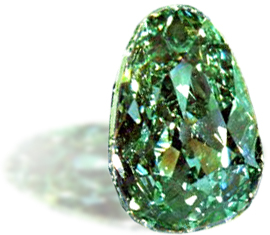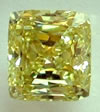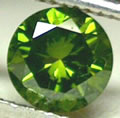Green diamonds with no other secondary hues or modifiers are some of the rarest and depending on Intensity and Purity of color, command astronomical prices. Most of the green diamonds have gray, brown or yellow modifiers.
The common names of green diamonds include: emerald green, bottle green, forest, grass, chartreuse, teal etc. The green rough diamonds are mined in Brazil, South Africa, India, Australia, Congo, Ghana and Siberia.
 Besides the Hope diamond, the second most famous diamond is the Dresden Green. It is green and weighs 40.70. it is believed to have come from Brazil in 1725. It was purchased by Frederick Augustus the Second from a gem merchant at the Leipzig Fair in 1742. Since then, it has been exhibited for public display in the west wing of the Dresden castle.
Besides the Hope diamond, the second most famous diamond is the Dresden Green. It is green and weighs 40.70. it is believed to have come from Brazil in 1725. It was purchased by Frederick Augustus the Second from a gem merchant at the Leipzig Fair in 1742. Since then, it has been exhibited for public display in the west wing of the Dresden castle.
 In 1983, a 8.19 rectangle green diamond was sold at Sotheby’s for $396,000. In 1988, a 3.02 yellowish/green sold for $1.7 million.
In 1983, a 8.19 rectangle green diamond was sold at Sotheby’s for $396,000. In 1988, a 3.02 yellowish/green sold for $1.7 million.
Green color in diamonds is caused by exposure to the natural radiation in the earth. At some point during its formation the diamond may have come in contact with radioactive material such as Uranium ore. The presence of brown or green radiation stains on the surface is indicative if natural green color.
The secondary hues and color modifiers are yellow, gray, brown and blue in rare cases.
 The enhanced (irradiated) green is colored in a similar manner as they are done in nature. Using irradiation techniques under controlled laboratory conditions (similar to the natural process) the resultant green color obtained looks very similar to the natural ones. The enhanced green diamonds are relatively cheaper than the natural ones
The enhanced (irradiated) green is colored in a similar manner as they are done in nature. Using irradiation techniques under controlled laboratory conditions (similar to the natural process) the resultant green color obtained looks very similar to the natural ones. The enhanced green diamonds are relatively cheaper than the natural ones
